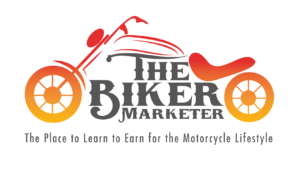Find Your Niche and Audience
Understanding the Motorcycle Community
When I first decided to start my motorcycle blog, I did a little deep dive into the world of motorcycling. The motorcycle community is diverse; you’ve got cruisers, sportbikes, dirt bikes, and everything in between. It’s crucial to identify where your interests align with your audience’s. Whether you’re into long-distance touring, customizing bikes, or off-road adventures, find that sweet spot that excites both you and your readers.
Spend some time in online forums, social media groups, and at local bike meetups to get a feel for what bikers are talking about. Trust me, this firsthand research will guide the content you create and help you connect with your audience on a personal level.
Once you’ve got a grip on the community, think about how you can provide value—be it through tutorials, gear reviews, or travel stories. The more you understand your audience, the better you can cater your content to their interests.
Choosing Your Blog’s Focus
For me, it was about blending my experiences with practical advice. Let’s face it, there are a million motorcycle blogs out there, so standing out is key. You might choose to focus on a specific type of motorcycle, the art of maintenance, or even the lifestyle surrounding biking.
Your blog’s niche should reflect what you are passionate about. If you love the thrill of cross-country road trips, why not make that your main theme? Personal stories, challenges you’ve faced, and how you conquered them resonate well with readers looking for inspiration!
Keep in mind, what you start with doesn’t have to be the end-all-be-all. As you grow and evolve, your blog can change too, but starting with a strong focus can help you build a loyal readership right from the get-go.
Targeting the Right Audience
Once I figured out my niche, I put a lot of effort into targeting my audience. Knowing who they are will help you create content they’ll love. Are they newbies looking for tips? Veterans sharing epic tales? Maybe they’re gearheads who want the latest and greatest modifications. Knowing this is half the battle!
Consider creating reader personas. Break down their interests, age, skill level, and what kind of bike they ride. It’s all about crafting content that speaks directly to them. For instance, I’d share my personal stories aimed at new riders while still throwing in bits that experienced bikers would find valuable.
This method opened up so many avenues for engagement, especially on social media, where I could tailor posts based on who I wanted to attract. Trust me, when you create content for your ideal reader, the engagement skyrockets!
Selecting a Blogging Platform
Evaluating Your Options
Choosing the right blogging platform can feel overwhelming, but it’s super important! When I started, I sifted through options like WordPress, Blogger, and Squarespace. Each has its pros and cons, but it really depends on your technical comfort level.
I leaned towards WordPress because of its flexibility. I could customize things easily and, best of all, I wasn’t locked into one design. You’ll find plugins specifically built for bloggers in the motorcycle niche, making it easy to implement features without needing to know code.
If tech isn’t your forte, you might find a drag-and-drop site builder like Wix easier and friendlier to start with. Check out different platforms to see which one feels right before you commit.
Setting Up Your Blog
Getting hands-on with the design and setup was one of my favorite parts. I wanted my blog to feel like a cozy bike shop where everyone could gather. Choose a clean layout that is easy to navigate, and most importantly, mobile-friendly; many readers will check your blog on their phones.
Also, don’t forget to invest in a solid logo and branding. This is how people will recognize you! I designed mine to reflect my style and the vibes of my blog.
Take some time to think through categories and tags; it’ll help with SEO and make it easier for readers to find what they’re looking for. And remember, this is your space to shine!
Creating Compelling Content
Content is where the magic happens. I spent a lot of time figuring out what resonates with my readers: engaging stories, insightful tips, and even motorcycle travel logs. The key is to be authentic and relatable; recount personal experiences, what works for you, and what doesn’t.

Also, mix things up! From articles and photo essays to videos and podcasts, different formats can keep your content fresh and appealing. I love sharing videos of my rides—those clips really let readers feel the adventure alongside me!
Don’t forget to incorporate call-to-actions (CTAs) to encourage readers to interact with your content, be it through comments or sharing your posts on social media. This raises engagement and strengthens your community!
Monetizing Your Blog
Exploring Revenue Streams
Now we get to the exciting part—making money! When I was starting out, I explored various revenue streams such as affiliate marketing, sponsored content, and merchandise. Affiliate marketing was a game-changer for me; I teamed up with brands I believed in and shared links in my blog posts or social media.
However, don’t forget about sponsored content! When brands see the value in your audience, they might approach you for collaborations. Just make sure it aligns with your values and interests, as authenticity is key.
Ultimately, think about your personal brand and how you can leverage it. Selling custom merchandise like t-shirts or decals with your blog’s logo can also add an extra bit of income while promoting your brand!
Building a Community
Engagement is vital in turning your blog into a profitable endeavor. I always made it a point to respond to comments and messages; this makes your readers feel valued and heard. Building community ties goes a long way; online forums, social media platforms, and email newsletters keep your audience connected and informed.
Hosting events or meetups can also add tremendous value. Being face-to-face with fans adds a whole new layer to your online presence. I still cherish the friendships I’ve made at motorcycle rallies and community rides!
Don’t overlook social media either—use platforms like Instagram, Facebook, or YouTube to reach your audience where they’re at! Post consistently and share snippets or behind-the-scenes looks that drive traffic back to your blog.
Tracking Progress and Adjusting Strategies
The importance of tracking your progress cannot be overstated! I constantly check analytics to see what types of content resonate most with my audience. This helps me refine my strategies and figure out what’s working and what isn’t.
Google Analytics is a powerful tool for monitoring traffic, reader engagement, and even demographics. Use these insights to shape your future content! Sometimes the posts I thought would tank ended up being the most popular. It’s all about staying adaptable and responsive.
Regularly reviewing your monetization strategies is key too. If something isn’t working, be fluid enough in your approach to pivot and try something new. This journey is all about continuous learning!
Frequently Asked Questions
1. How long does it take to start making money from a motorcycle blog?
It really depends on your dedication and strategy. Many bloggers start seeing income within 6 months to a year, but consistent effort and engaging content are key!
2. Do I need to know how to code to start a blog?
Nope! Most blogging platforms make it super easy to set up a blog without any coding knowledge. Just choose a user-friendly platform and you’re good to go!
3. Should I focus on SEO when starting my blog?
Absolutely! Understanding and implementing basic SEO strategies will help your blog rank higher in search engines, driving more traffic to your site from day one.
4. What if I don’t get enough readers right away?
Patience is essential. Focus on creating valuable content, promote your blog through social media, and engage with your community. Growth takes time, but consistency pays off!
5. Can I monetize my blog with affiliate marketing alone?
Yes, many bloggers successfully make a living through affiliate marketing. However, diversifying your income streams, like adding ads or sponsored content, can strengthen your financial position.


